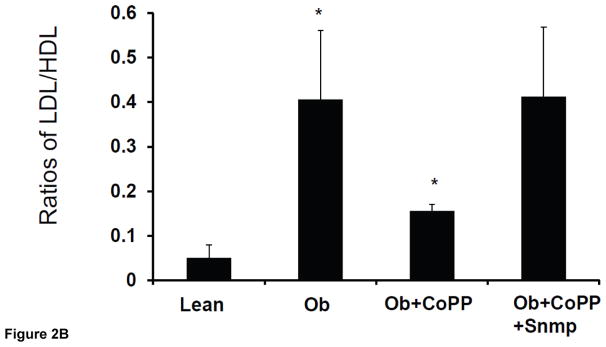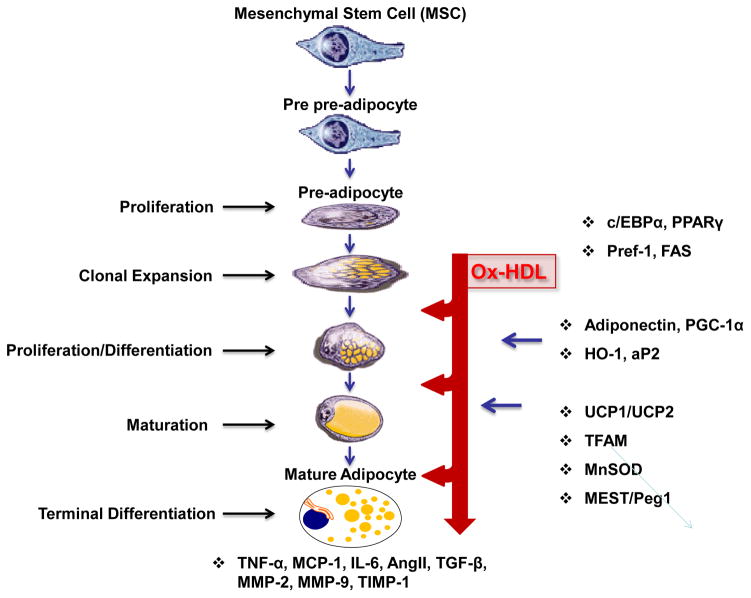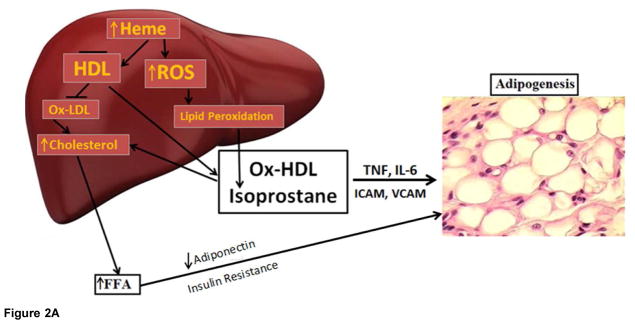Oxidized HDL and Isoprostane Exert a Potent Adipogenic Effect on Stem Cells: Where in the Lineage?
Cell, stem cells and regenerative medicine
Pub Date : 2016-01-01
Epub Date: 2016-04-27
DOI:10.16966/2472-6990.109
引用次数: 9
Abstract
The development of adipocytes in mice and humans follows a well-defined pathway that commences with a common pluripotent mesenchymal stem cell (MSC), ie., adipogenesis [1]. The early steps of the pathway leading to the generation and the commitment of MSCs to an adipocyte lineage are unknown. Hypothetically, the determination of the fate of MSCs occurs early in cell differentiation (“commitment”) and involves the interplay of intrinsic (genetic) and environmental (local and systemic) conditions that ultimately define the fate of the cell. Factors that determine MSC proliferation and differentiation also govern early adipocyte development and function. Currently, little is known about this process; from MSC-to-preadipocyte differentiation. However, the steps governing the transition from preadipocyte to adipocyte differentiation are not well defined (Figure 1). During adipogenesis MSCs or preadipocytes differentiate into lipid-laden adipocytes [2]. Ox-HDL increases adipogenic properties with a marked effect on the last step of adipocyte-terminal differentiation and release of adipokines including 20-HETE and Ang II.



氧化HDL和异前列腺素在干细胞中发挥强大的成脂作用:在谱系中的位置?
本文章由计算机程序翻译,如有差异,请以英文原文为准。
求助全文
约1分钟内获得全文
求助全文

 求助内容:
求助内容: 应助结果提醒方式:
应助结果提醒方式:


